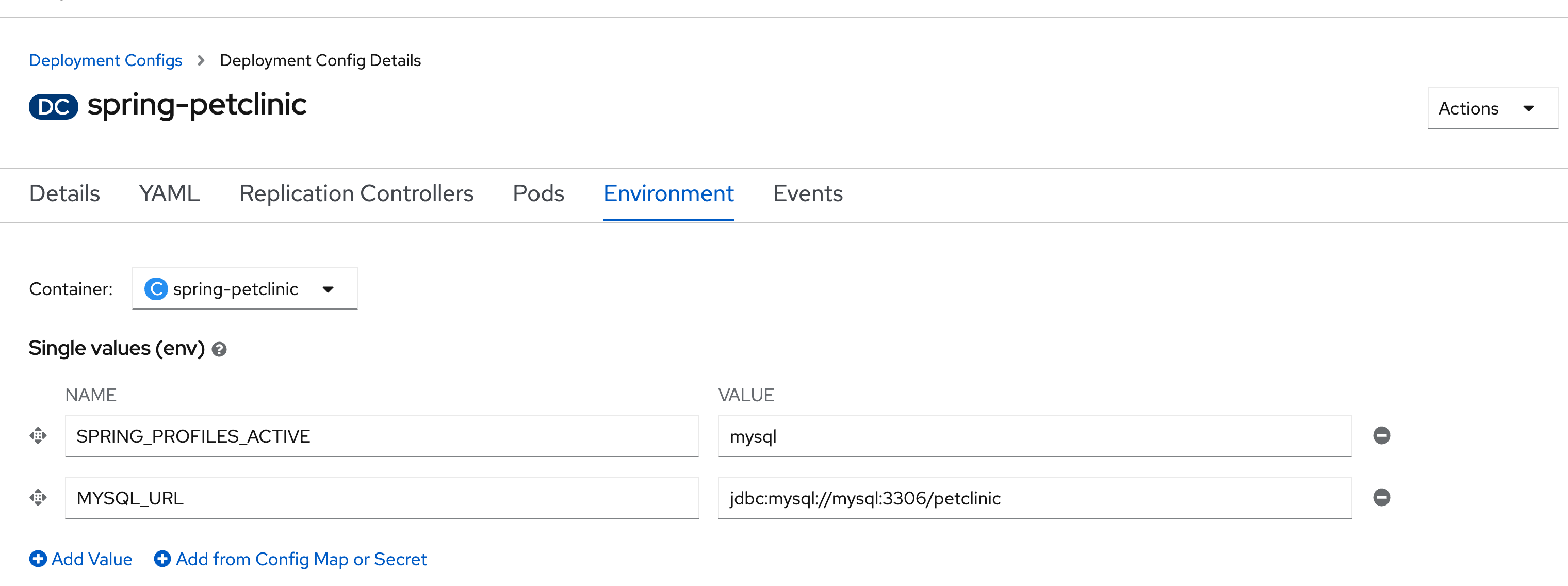This repo contains a container-ready implementation of the iconic Spring Petclinic application. Specifically, this code is useful with the OpenShift Source-to-Image (s2i) technology and is part of the introductory material for Developer Sandbox for Red Hat OpenShift.
Get your free OpenShift cluster to run this demo. You can get free access to Developer Sandbox for Red Hat OpenShift at: https://developers.redhat.com/developer-sandbox
Make sure you are in the Developer perspective:
And create a new MySQL instance by clicking the +Add button and choosing the Database option:
Choose MySQL Ephemeral:
and Click Instantiate Template.
Then fill the wizard with the following parameters:
Click the Create button.
We are using the Ephemeral implementation because this a short-lived demo and we do not need to retain the data.
In a production system, you will most likely be using a permanent MySQL instance. This stores the data in a Persistent Volume (basically a virtual hard drive), meaning the MySQL pod can be destroyed and replaced with the data remaining intact.
Click the +Add button and choose From Git type:
Fill the git repo with the following value https://github.com/redhat-developer-demos/spring-petclinic and select the project as Java project:
Click the Build Configuration link:
Add the following environment variables:
SPRING_PROFILES_ACTIVE=mysql
MYSQL_URL=jdbc:mysql://mysql:3306/petclinic
Finally click the Create button and wait until the Build is done and the Pod is up and running (dark blue around the deployment bubble). In testing this using the Developer Sandbox for Red Hat OpenShift, this step took approximately six minutes. Please note: You may see error messages in the Sandbox. They are temporary while the application builds.
Then push the Open URL button to view the Pet Clinic app:
And if you visit the MySQL deployment's Terminal then you connect to the database to see the schema and data
mysql -u root -h mysql -p
petclinic
use petclinic;
show tables;
select * from owners;










